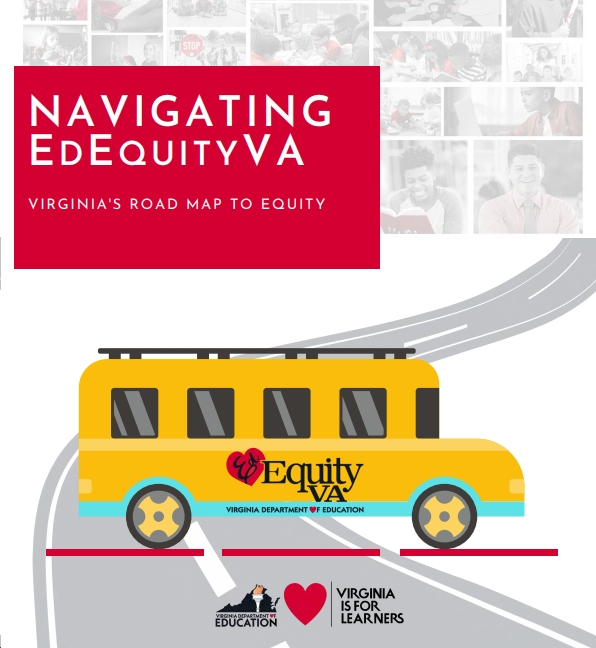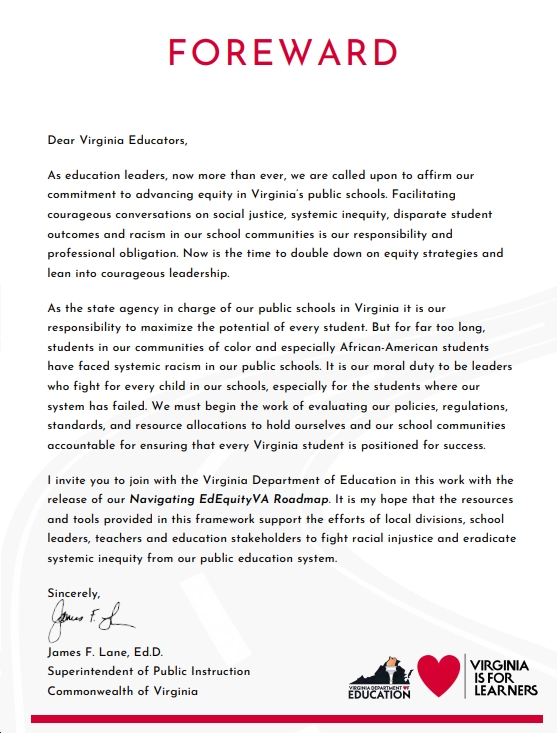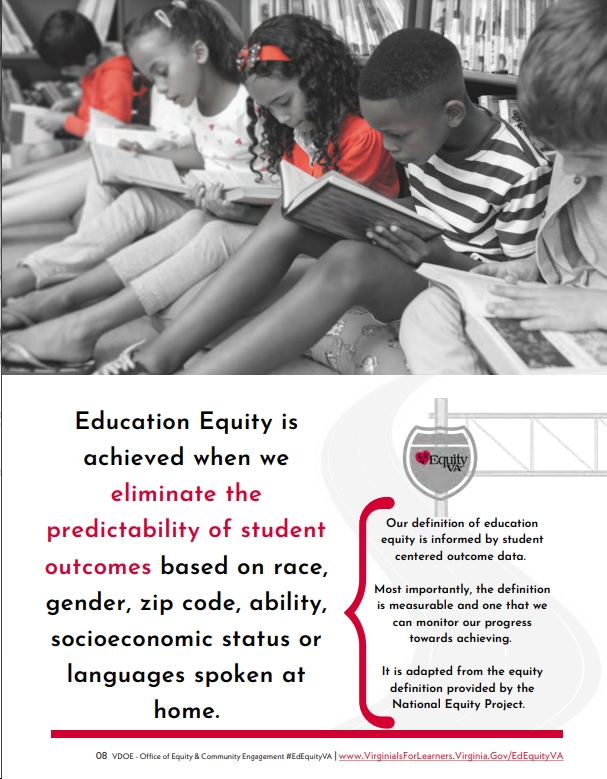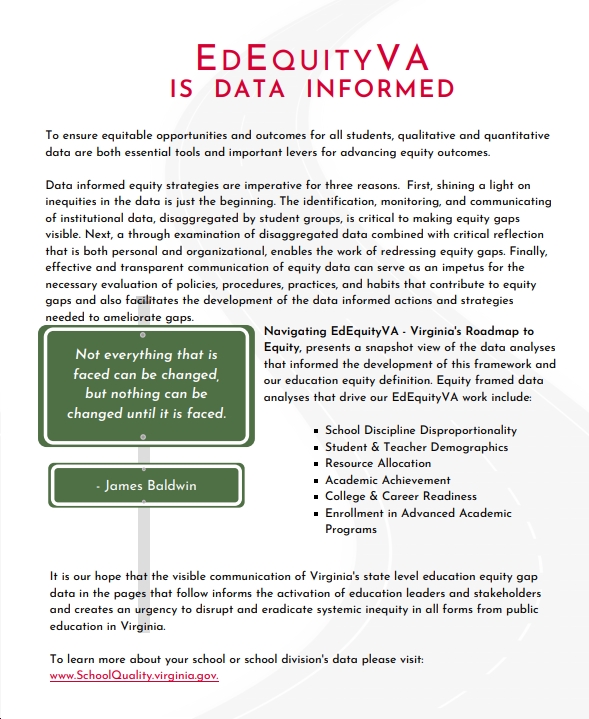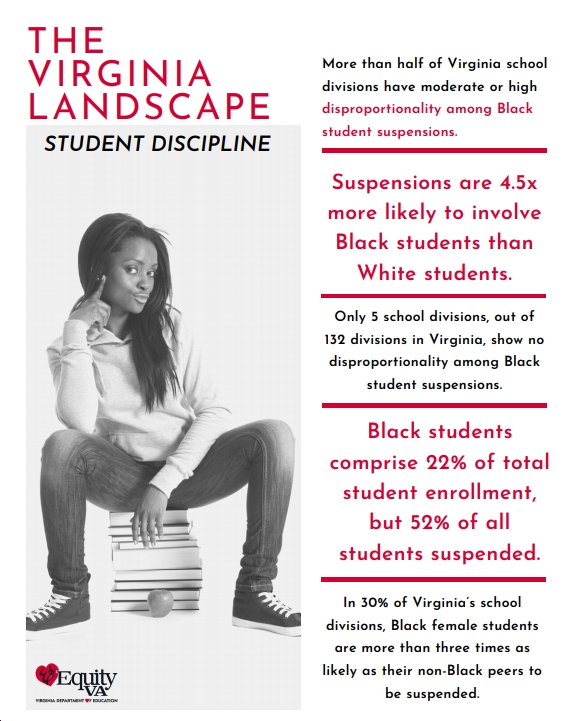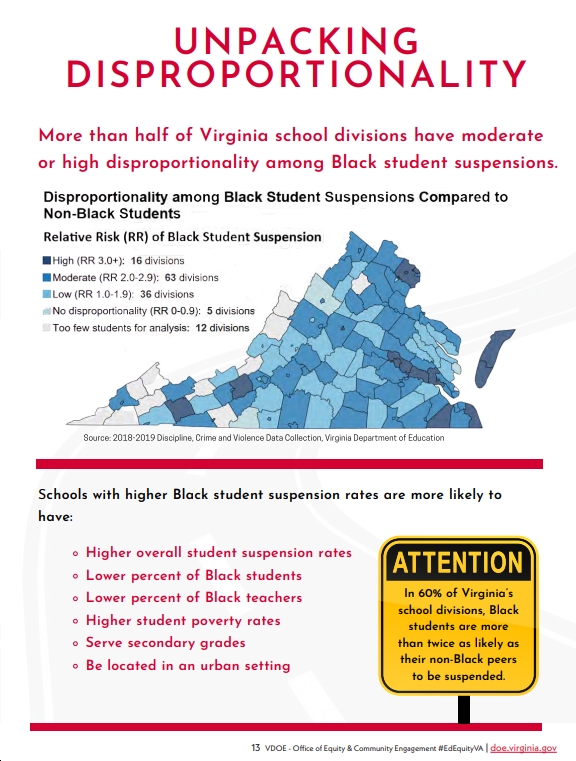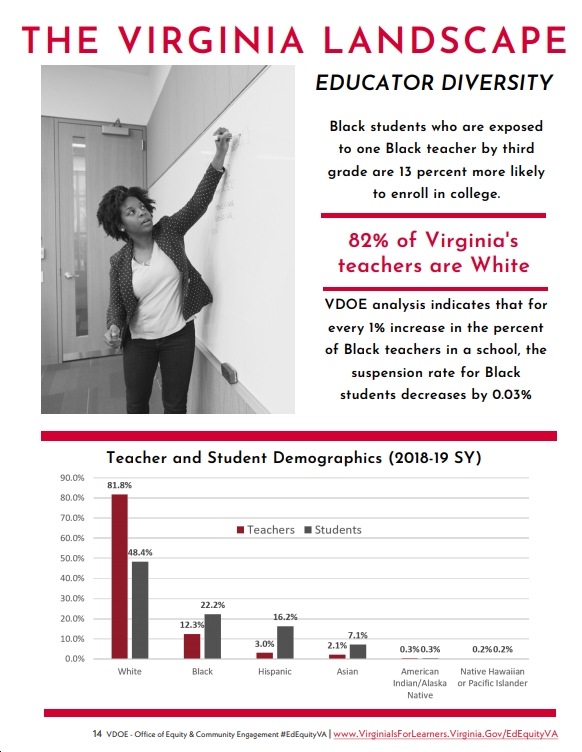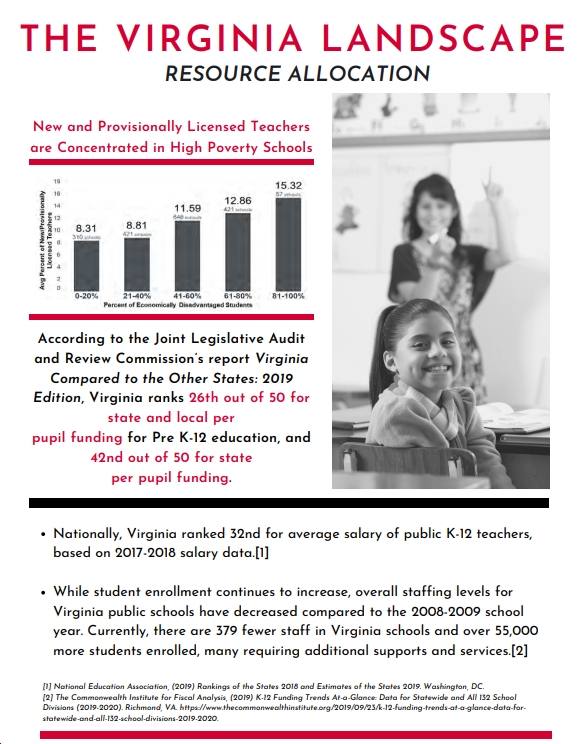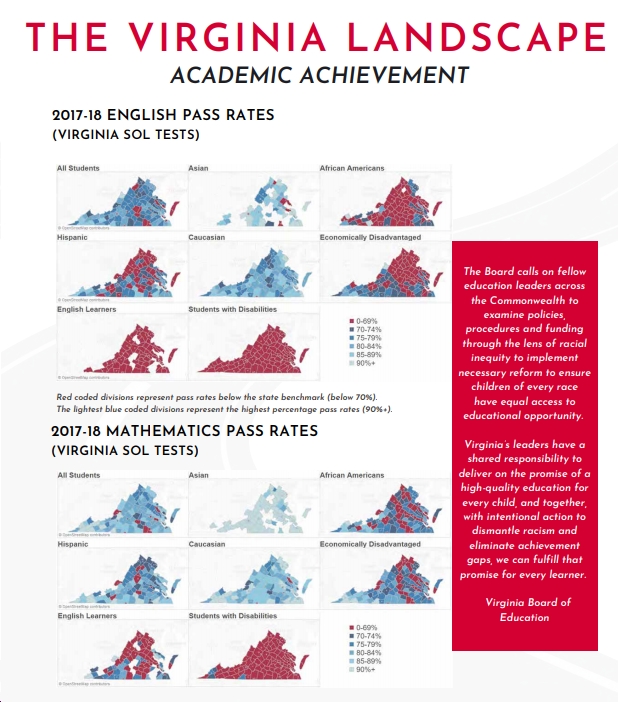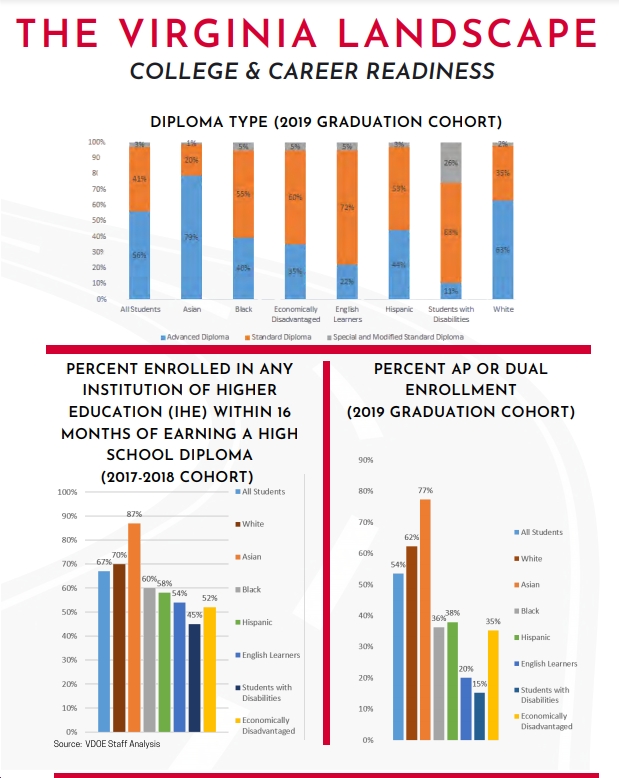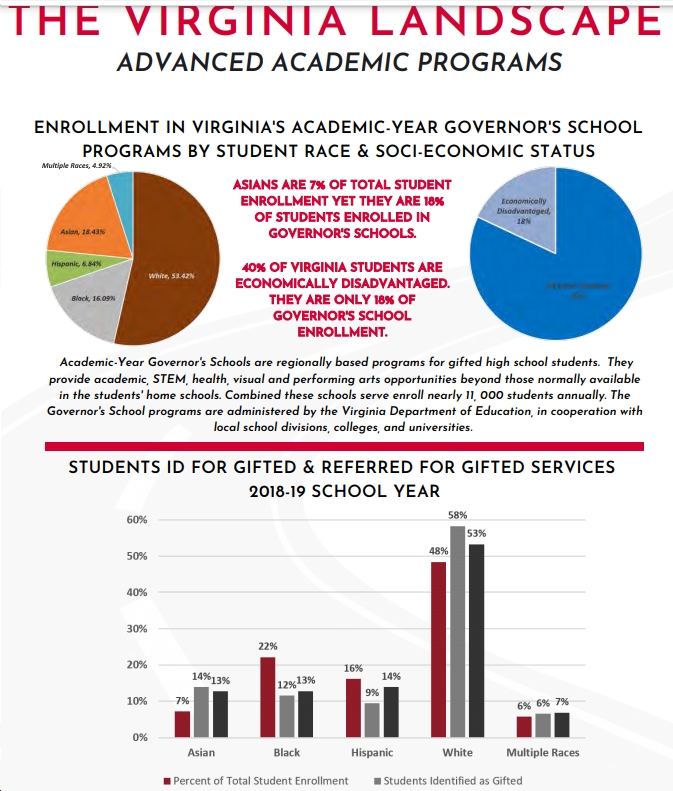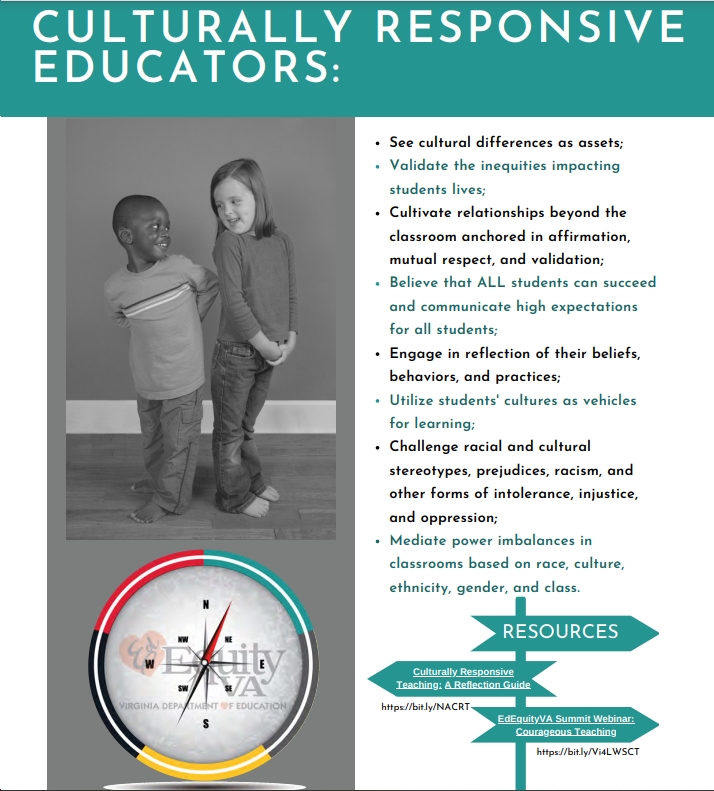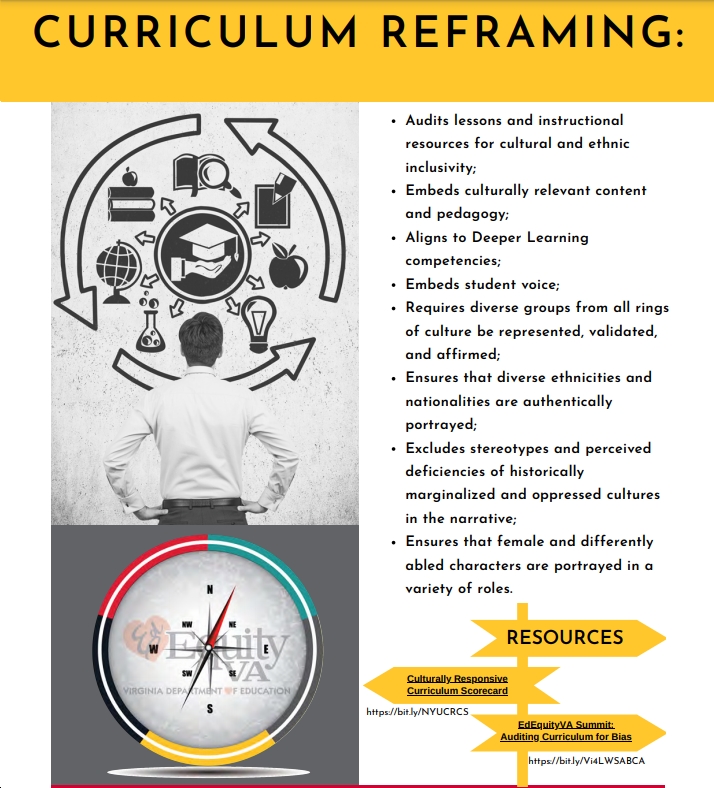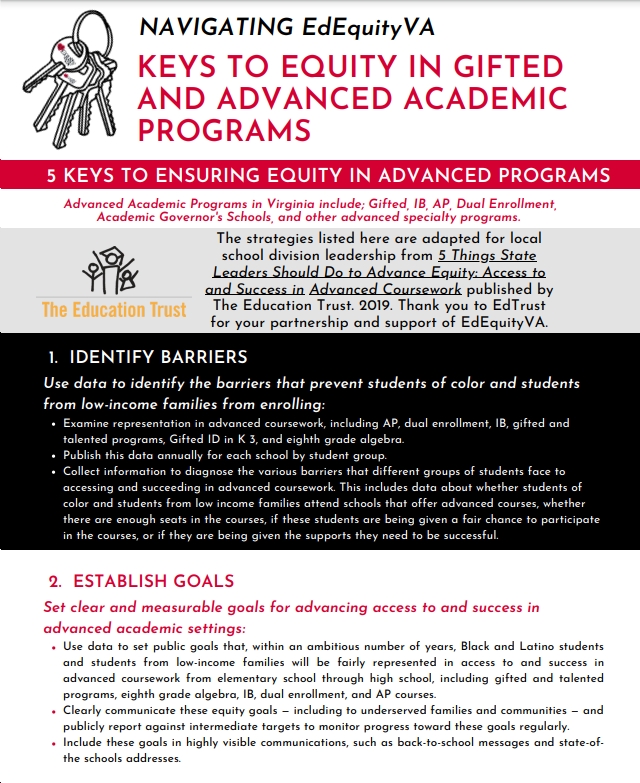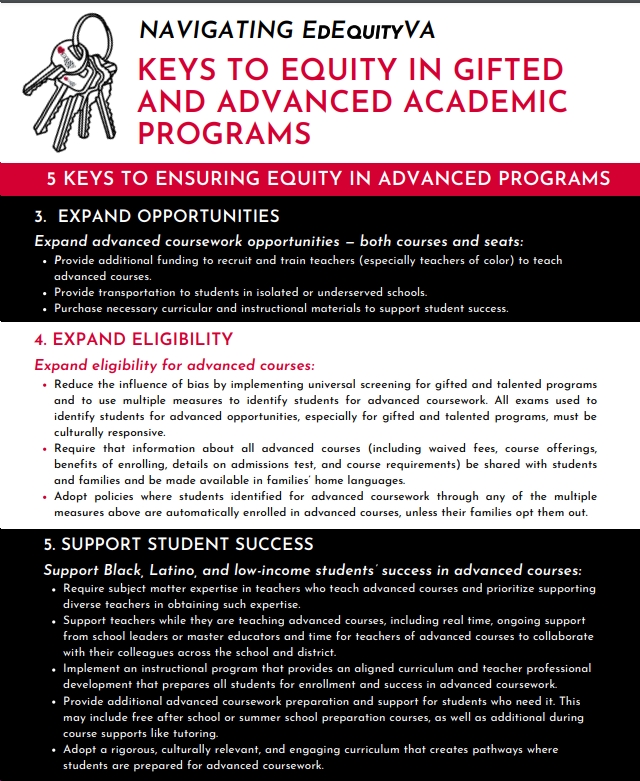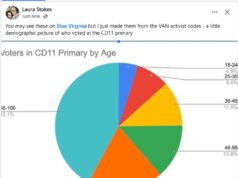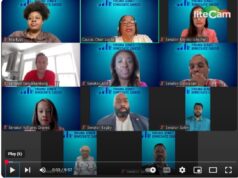The Virginia Department of Education is out with a great new report, “Navigating EdEquityVA: Virginia’s Road Map to Equity,” which states very clearly at the outset:
“...for far too long, students in our communities of color and especially African-American students have faced systemic racism in our public schools. It is our moral duty to be leaders who fight for every child in our schools, especially for the students where our system has failed. We must begin the work of evaluating our policies, regulations, standards, and resource allocations to hold ourselves and our school communities accountable for ensuring that every Virginia student is positioned for success.”
See below for some of the graphics from the report, and a few key takeaways (my comments in bold/blue after the quotes from the report), including:
- “Education Equity is achieved when we eliminate the predictability of student outcomes based on race, gender, zip code, ability, socioeconomic status or languages spoken at home.” (This is an ambitious goal, obviously, and is not going to be solved overnight, but we need to commit to working towards it.)
- “Equity framed data analyses that drive our EdEquityVA work include: School Discipline Disproportionality; Student & Teacher Demographics; Resource Allocation; Academic Achievement; College & Career Readiness; Enrollment in Advanced Academic Programs.” (The folks who put this report together clearly have looked at this issue thoroughly, which is very helpful and should be commended.)
- “More than half of Virginia school divisions have moderate or high disproportionality among Black student suspensions.
Suspensions are 4.5x more likely to involve Black students than White students. Only 5 school divisions, out of 132 divisions in Virginia, show no disproportionality among Black student suspensions. Black students comprise 22% of total
student enrollment, but 52% of all students suspended. More than half of Virginia school divisions have moderate or high disproportionality among Black student suspensions” (This is really striking and disturbing, even if we’ve heard it before – e.g., see New Report Finds Significant “Disproportionality Among Black Student Suspensions Compared to Non-Black Students” in Virginia from February 2020. Also, see this 2018 report from Brookings, which cites a 2014 U.S. Department of Education “Dear Colleague Letter (DCL) on racial disparities in school discipline,” which ” cites multiple studies in its assertion that differences in behavior do not explain the gap in disparities.” The Brookings report also discusses new studies which provide “suggestive evidence that discrimination contributes to the discipline gap.” Also see this July 2020 Brookings article, which discusses data that “largely confirm hypotheses that connect county-level teacher implicit bias to disparities in achievement and school discipline between Black and white students at the county level.” So, clearly, while it’s hard to prove it beyond any doubt, there’s a lot of evidence that racially discriminatory attitudes almost certainly *contribute* to racial disparities in school discipline.) - “According to the Joint Legislative Audit and Review Commission’s report Virginia Compared to the Other States: 2019 Edition, Virginia ranks 26th out of 50 for state and local per pupil funding for Pre K-12 education, and 42nd out of 50 for state per pupil funding.” (These are not areas we want to rank 26th in – let alone 42nd. Of course, to fix that will require a lot of money, which means the dreaded “t” word. Of course, if we legalize and tax marijuana, that could be a significant source of new revenues. We also could bring back the estate tax, which should never have been eliminated in the first place, and make our income tax more progressive.)
- At Virginia’s Governor’s Schools (“regionally based programs for gifted high school students”), “Asians are 7% of total student enrollment yet they are 18% of students enrolled in Governor’s Schools. 40% of Virginia students are economically disadvantaged. They are only 18% of Governor’s School enrollment.” (This data provides useful context for the ongoing debate over what to do about admissions to the Thomas Jefferson High School for Science and Technology – “TJ” – including a possible “merit lottery” system for admissions. As this data shows, while “40% of Virginia students are economically disadvantaged…they are only 18% of Governor’s School enrollment.” That indicates a strong correlation between family wealth/income and a child’s chances of getting into a “Governor’s School.” So obviously, having more economic resources can be VERY helpful – “social capital” which can be used to “navigate bureaucratic hurdles,” “pick a home in the middle schools that are the best feeders to ‘TJ’,” figure out which tests are important to take, when to take them, how to succeed on them (including being able to pay for enrichment activities, test preparation, tutoring, summer camps, etc., which can cost tens of thousands of dollars), etc. Does that seem fair or equitable? I mean, if a kid is brilliant, why should they not be able to get into a Governor’s School simply because their relatively poor parents don’t have the “social capital” that relatively wealthy families have? It’s hard to think of a good answer to that question…)
